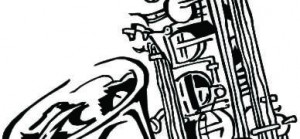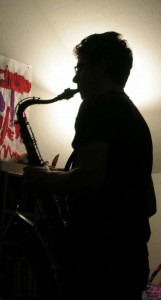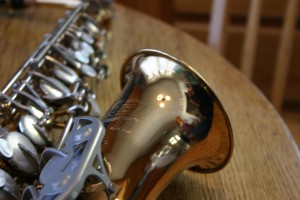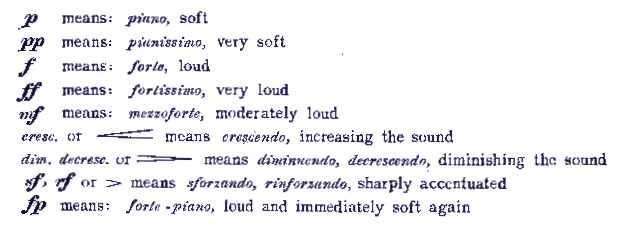Protected: Saxophone Fingering Chart – Middle F (E#)
Protected: Saxophone Fingering Chart – Middle E (Fb)
Musicians, the RIAA, and Derek Sivers (CD Baby)
I did some research a little while back about the music business craziness.
Based on the rhetoric thrown about by the RIAA and the lawsuits filed for the “benefit” of small time musicians, it would seem technology has all but crushed the chances for up and coming musicians.
A great deal of negativity is emphasized as resulting from new technology, yet upon careful examination and with an open mind to the thoughts of musicians themselves, the music world may be a changed place, but it may also be that new opportunities have been created.
Emerging musicians cannot afford to focus on lawsuits brought by the RIAA, and suing fans seems counterproductive anyway. A better model would be to find ways for musicians to use the new technology to take control of their own business and finances. This model would begin with the realization that the standard model of the record company seems to fail in this new online environment.
People can directly exchange any music files they want. Sales of CDs will probably never be as high as they once were. So how can the new musician use technology to take control of his or her own career?
Derek Sivers: A Prototype Solution
When Derek Sivers, founder of CD Baby, first wanted to sell his CD online he found no one would sell it unless he had a distributor. Derek Sivers made his living as a musician and then later focused on the business side of the music world. However, even as he made a living being a musician a working knowledge of business practicalities was necessary.
He resolved to start his own outlet for independent artists to sell their CDs. Matt Welch describes the method of Derek Sivers as “hippie-capitalist wisdom” and Sivers committed to his principles early on and stuck with them. He will pay musicians every week, disclose the full name and address of everyone who buys the CD, and does not require a minimum number of CDs to be sold. If only one person in a course of five years wants “electronic tuba music” (Goodman 5) then Sivers wants it to be available. Through partnerships with iTunes and other digital sales venues, an electronic version will also be available. This electronic version can even be made more readily available since the cost involved is so much less.
In 1997 he built his website. Two of the heaver expenses, the first in money and the second in time, in doing business online is having a credit card merchant account and building a shopping cart. These two steps require capital and coding knowledge or the money to pay someone who does. Sivers had had a successful career as a musician and made enough money through performance to purchase a house and fund his new venture. Once Sivers built the site, a few of his musician friends asked to use it as well.
In 1999 Derek Sivers said, “Man, can you imagine, we might need to really prepare. This thing might get huge one day. I mean, we might have 100 artists here.” (Goodman 3). At this point CD Baby sells the music of about 93,000 independent artists. The rebellion against major record labels has found a great and realistic business alternative. If it had existed earlier maybe Prince would have simply gone to CD Baby instead of changing his name to an unpronounceable symbol. Since he felt powerless in the hands of his record label, Prince changed his name in an act of protest. Musicians on CD Baby keep the rights to their own music and have much greater control over what they play and how they can make it available to the public. CD Baby is nonexclusive–Sivers knows that it is difficult to sell music and therefore allows musicians to sell it wherever they please; he simply would like them to also sell with him. He made his living as a professional musician for years and, knowing the artistic and business issues of the new musician from both sides, wished to create a real service for musicians with CD Baby. Sivers thought about creating something along the line of iTunes, but before he could act, iTunes exploded in popularity and actually approached him with an offer. With the rapid success of iTunes, Sivers did not wish to compete with Apple in this market. He also believes that the partnership between CD Baby and iTunes gives another great opportunity for the people who sell physical CDs on CD Baby.
CD Baby thus serves as a way for all musicians to sell CDs, and as such has given an opportunity to 150,000 independent musicians. However, technology has changed the business and financial rules of the music world. Formerly, “It used to be that, as a musician, only 10% of your career was up to you.” (Sivers). That ratio has shifted completely and now the musician controls 90% of the process. “You have to make a great recording, a great show, a great image. You have to come up with a plan and make it happen, too. You have to make thousands of people want your music so much they pay good money for it. You have to make things happen on your own. Even if a record label puts it in the stores for you, it’s still up to your own hard work to go make people buy it.” (Sivers) This feat does not come easily by any means, but the tools and resources exist to make it happen.
In addition to making music, designing a website, and recording an album, doing all the artwork, promotion, and booking would be impossible for a single person to do effectively on a large scale. However, understanding the elements involved can help tremendously. As Sivers says, “Business is as creative as music.” (Sivers). The goals of business can be reached using as much freedom and independent thought as that in creating a musical composition. Similarly, with an open approach, learning piano in addition to one’s main instrument will improve one’s overall musicality and success is not an unbelievable statement. “Many great horn players, bassists, guitarists, and drummers have been excellent pianists as well, including Charles Mingus, Joe Chambers, Jack DeJohnette (all three of whom have recorded piano albums), and Joe Henderson.” (Levine vi) Likewise, understanding business ideas will help the overall success of a musician.
At first it may be awkward to think about business. But anything new will take time to become comfortable. And once someone is more accustomed to thinking about things in a business sense they will feel more confident and able. Then creativity will flow in your business, marketing, and promotion as well as your music. “Do with your business what you would tell a new, stiff, scared musician to do with their instrument.” (Sivers). You need to relax and eliminate fear of trying in order to succeed. On that note, I turn to a discipline that may seem quite unrelated to musicians/music.
Coleman Hawkins Plays Indian Summer
Coleman Hawkins playing ‘Indian Summer’ on tenor saxophone.
Joachim E. Berendt said, “there were some tenor players before him, but the instrument was not an acknowledged jazz horn” (Berendt, Joachim E (1976). The Jazz Book. Universal Edition.)
Lenny Pickett Mouthpiece – What's He Playing?
According to what the Woodwind Editors, Lenny Pickett plays a Berg Larsen mouthpiece 130/0 facing and Vandoren 2-1/2 classic reeds on a Selmer Mark VI tenor sax. (Saxophone Masterclasses 1998)
The information about his mouthpiece and horn is included next to the article that Lenny Pickett wrote.

The mouthpiece and reed are going to make a much bigger difference in your sound that the actual saxophone (as long as it’s in good working condition). And really, who is playing the saxophone is going to make a huge difference too.
Think about whether there is a specific person or a few people you want to sound like?
What you can do is check out what their mouthpieces and reeds are, to get an idea of what might help you get the sound you want. Getting exactly that won’t be the solution necessarily, because physically they had a different body than you.
Checking out their equipment can get you in the direction you want though.
Sax Station Contest!
There’s a contest this month (January 2010)!

The person who gets the most new people to subscribe gets a copy of the CD of the month – ‘Thunder’ with Stanley Clarke, Marcus Miller, and Victor Wooten.
So it goes from now until January 31.
They must enter your name as the person who told them about it and then click the confirmation.
And don’t do anything silly like signing yourself up multiple times, I’ll be able to tell.
Saxophone Growl – How to Growl on Sax
Hey Neal,
How do you growl on a saxophone? I heard you have to hum into it, but it’s not really working.
-Nicole

Hey Nicole,
It’s more than just humming, it’s more rough. Like you are literally growling in the back of your throat.
It’s a cool effect for getting a dirtier sound- good for blues, I use it in R&B and salsa too. Gato Barbieri has a growl in his sound it seems like.
Note- it’s much easier to growl on higher notes- try high C or D.
Let me know how it goes.
A couple people have asked me about this, so maybe I’ll do a video of myself doing it or something.
-Neal
How Long Should You Practice Sax?
Ideally you should practice for 10 hours a day, accompanied by Ron Carter, Victor Wooten, Stanley Clarke, and Marcus Miller on bass helping you feel the groove. Steve Gadd should join you on drums and Elvin Jones should be resurrected as well. Piano should be manned by resurrected Bill Evans, Mozart, and Duke Ellington. Benjamin Zander should be off to the side and Sonny Rollins and Roy Hargrove should be there to help you play your horn.
In case you can’t arrange this, possibly because your resurrection machine is currently out of order…..

Practice every day. Even if it’s only 20 minutes.
Practicing saxophone consistently will help you far more than longer sessions sporadically.
Resting during practice can help a lot if you practice for longer periods of time. If you get tired (embouchure specifically) then take a break. You don’t want to hurt yourself.
If you’re working out in a gym, you won’t go into the room, pick up a weight, and constantly do repetitions for two hours. You’ll work on one thing for a while, move to another thing, work on different muscles.
In the same way, you should practice a variety of things on saxophone- working with a metronome, ear training, developing overtones and control of your sound, learning scales, etc.
And take breaks in between! That way you can practice more effectively and longer without hurting yourself.
Personally, I like to have smaller practice sessions broken up into twenty minutes or so at a time, spread out through the day.
Normally I practice two ‘sets’ of 20-30 minutes in a night. I break it up into 1/3 warmup (longtones), 1/3 scales and arpeggios, and 1/3 tunes, playing with CDs, etc.
I do the scales with the metronome, but haven’t focused as much on scales lately.
Practicing effectively is more important than the actual time you practice. One sax player can do more in twenty minutes than another might do in an hour.
Saxophone Dynamics – Shades of Tone – Beginning Saxophone
The words we use for dynamics come from Italian.
Basically they are variations of ‘piano’ and ‘forte’.
Piano means soft, pianissimo means very soft, pianississimo means softer than that, etc.
Crescendos and decrescendos as well as sforzando and fp (forte-piano) describe changing dynamics.

Learning Saxophone – “Experiment is the sole judge of scientific ‘truth.’”
“Experiment is the sole judge of scientific ‘truth.’”
Richard Feynman

Feynman was a physicist who won the Nobel Prize. He invented Quantum Electrodynamics among other things.
He also played frigideira (Brazillian drum) and joined a samba school while he was teaching physics there.
When you’re learning saxophone, you also need to experiment to figure out how you want to play.
You’ll find that ‘rules’ can be bent. Playing a note that ‘doesn’t belong’ might sound good if you resolve it.
Knowing a lot of theory will not sound good until you experiment.
So don’t be afraid of trying new things, you’ll find some of it works and other pieces don’t, but you will learn a lot about music through the process.


